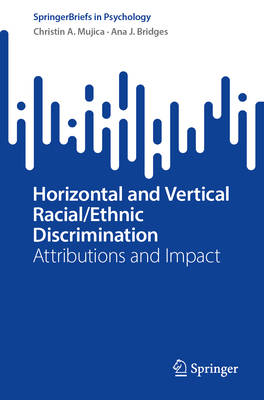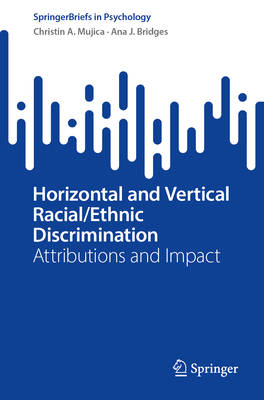
En raison d'une grêve chez bpost, votre commande pourrait être retardée. Vous avez besoin d’un livre rapidement ? Nos magasins vous accueillent à bras ouverts !
- Retrait gratuit dans votre magasin Club
- 7.000.000 titres dans notre catalogue
- Payer en toute sécurité
- Toujours un magasin près de chez vous
En raison de la grêve chez bpost, votre commande pourrait être retardée. Vous avez besoin d’un livre rapidement ? Nos magasins vous accueillent à bras ouverts !
- Retrait gratuit dans votre magasin Club
- 7.000.0000 titres dans notre catalogue
- Payer en toute sécurité
- Toujours un magasin près de chez vous
Horizontal and Vertical Racial/Ethnic Discrimination
Attributions and Impact
Christin A Mujica, Ana J Bridges
47,45 €
+ 94 points
Description
This book explores the nuances of how discriminatory events are viewed by people of color. Based on the authors' research, it seeks to illuminate the contextual and relational variables that influence perception of discrimination. The research suggests that:
- Ingroup members can perpetuate racist discrimination;
- Consistent with attribution theory, discrimination by White people is more often attributed to trait rather than situational causes;
- Consistent with cultural betrayal trauma theory, perceived racist discrimination by ingroup members can be more acutely distressing because it is unexpected.
Spécifications
Parties prenantes
- Auteur(s) :
- Editeur:
Contenu
- Nombre de pages :
- 84
- Langue:
- Anglais
- Collection :
Caractéristiques
- EAN:
- 9783031330575
- Date de parution :
- 29-06-23
- Format:
- Livre broché
- Format numérique:
- Trade paperback (VS)
- Dimensions :
- 156 mm x 234 mm
- Poids :
- 149 g

Les avis
Nous publions uniquement les avis qui respectent les conditions requises. Consultez nos conditions pour les avis.






